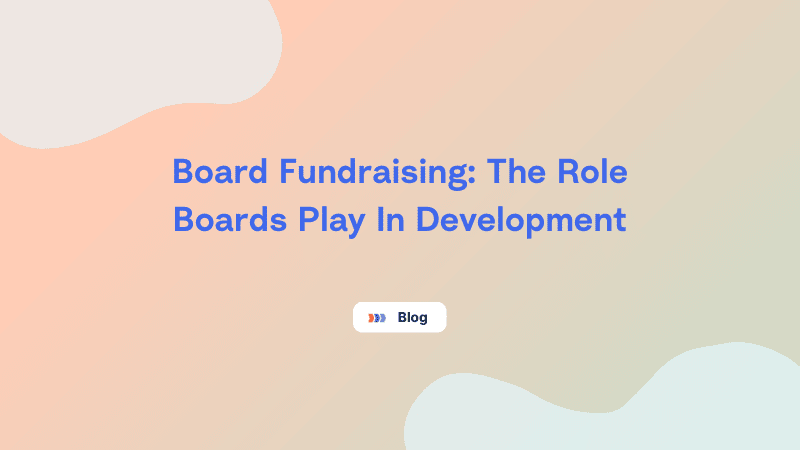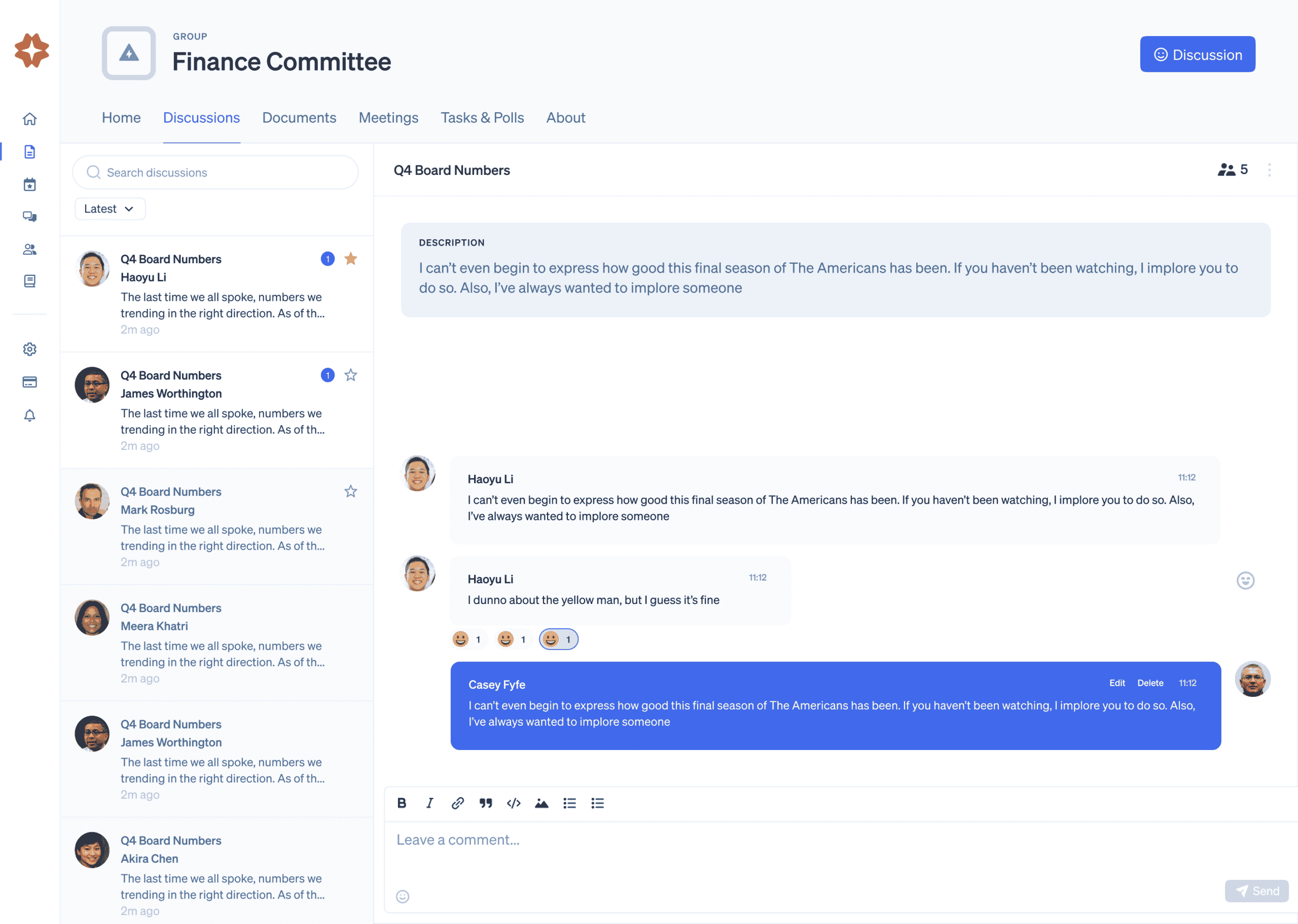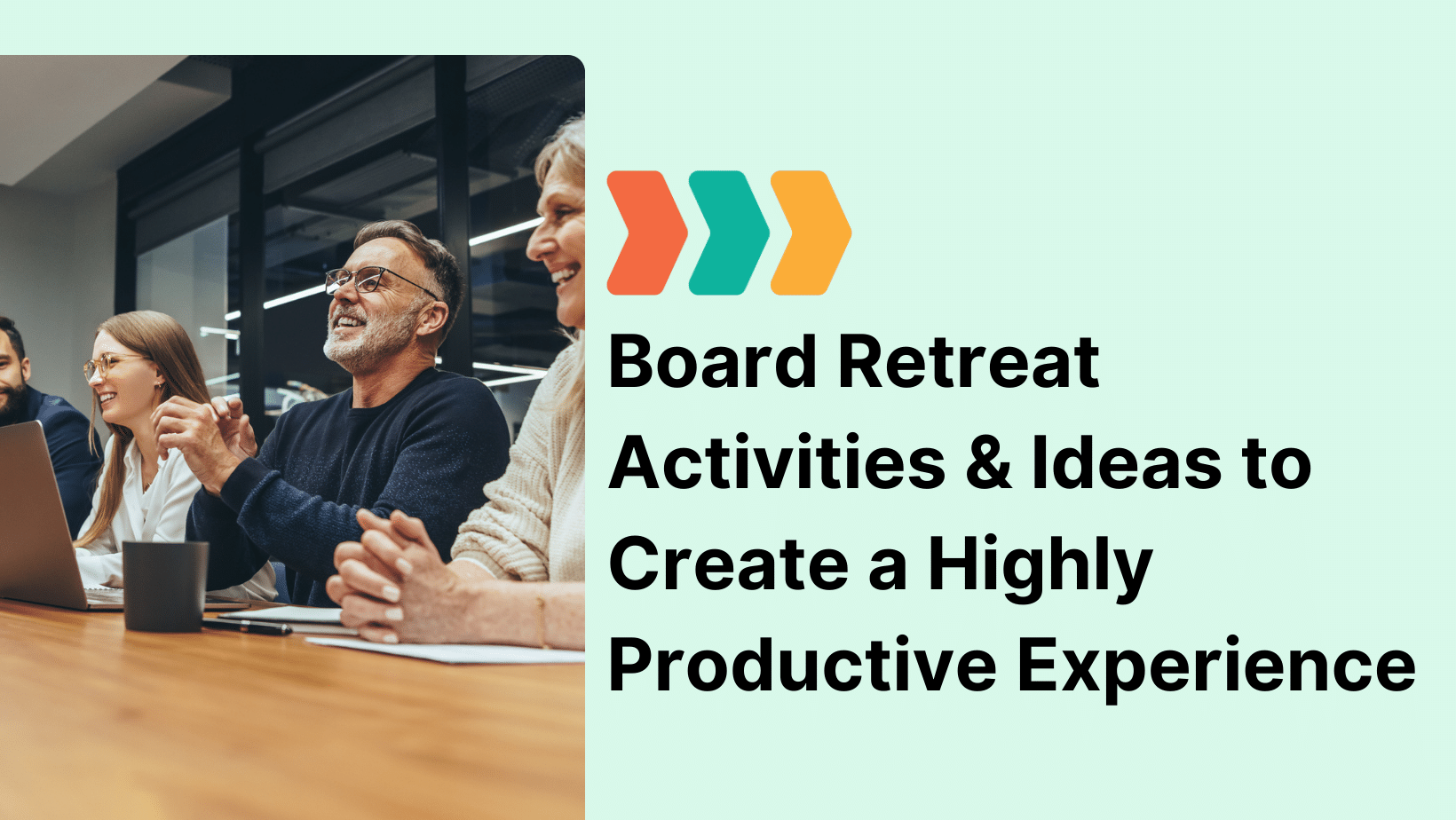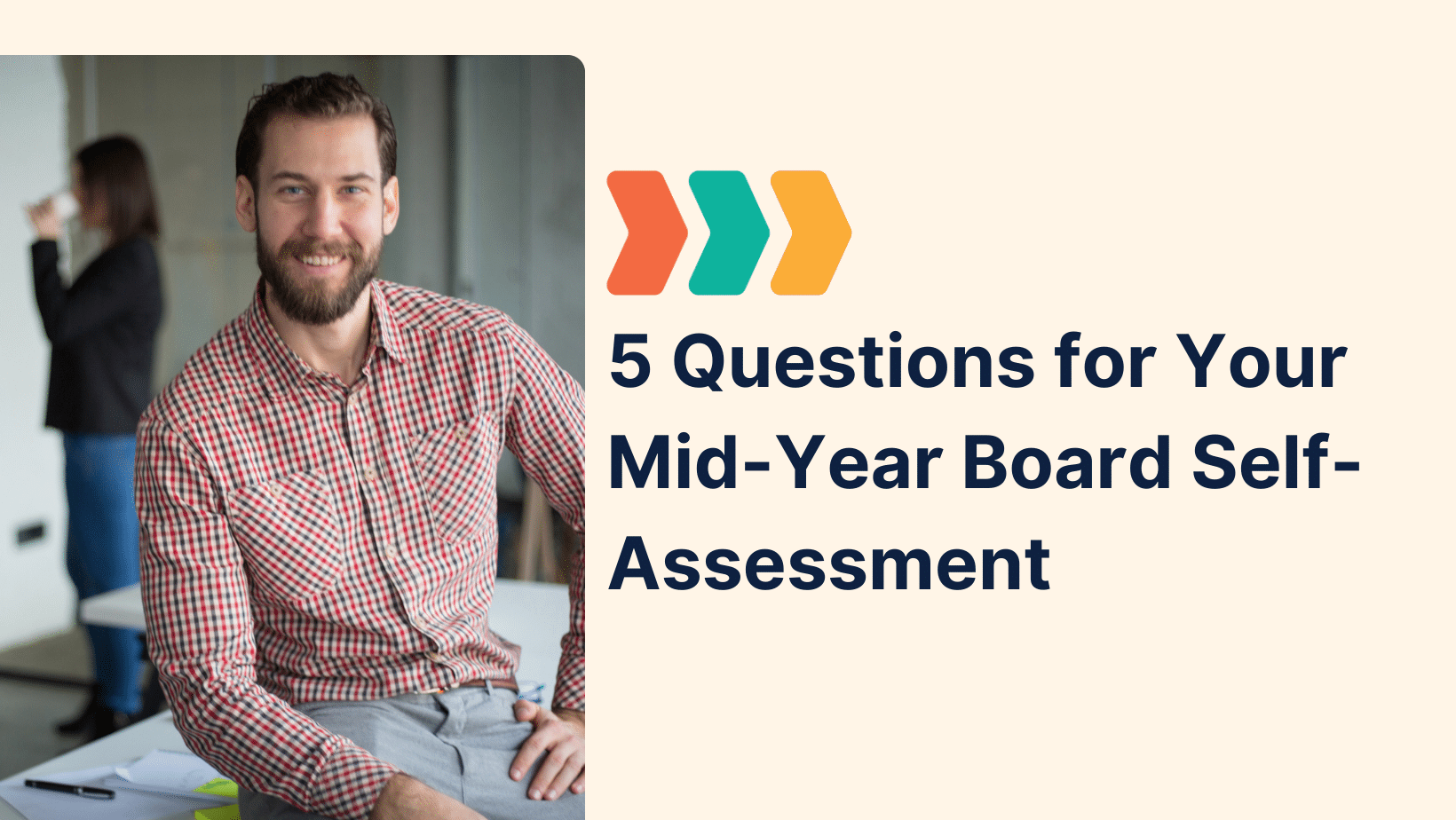Board members have a range of duties and responsibilities. They play notable roles in governing the organization, determining its strategic direction, and setting policies to support its collective vision. With everything you depend on board members to accomplish, one duty that can easily get swept under the rug is board fundraising.
Resource development is a crucial component of board service. Your board members each made a commitment to provide your organization with the resources it needs to thrive, and fundraising is a major part of that. A culture of enthusiasm for board fundraising is imperative for supplying your organization with the resources it needs to pursue its mission.
This doesn’t necessarily mean asking for donations. If your organization is large enough to have a dedicated development staff, your board may focus primarily on governance issues and assist the development team with introductions and personal contributions. For smaller nonprofits, the board’s network and fundraising efforts may be much more crucial to the organization’s bottom line.
Whatever your nonprofit’s board fundraising landscape looks like, you can be more successful by brushing up on the ins and outs of board fundraising. In this article, we’ll review the following core topics:
- Why Board Fundraising Matters
- Board Fundraising Expectations and Responsibilities
- Best Practices for Nonprofit Board Fundraising
- Board Fundraising Methods
- Common Challenges Encountered with Board Fundraising
Our team at Boardable has worked with thousands of mission-driven boards. We’ve seen the successes and failures of different approaches to board fundraising, giving us an idea of what tends to work (and what doesn’t). We’ve worked to build a powerful team that takes the time to understand and create the tools boards need to support the organizations they serve. Based on what we’ve seen, we’re confident that we can present your team with the most important board fundraising concepts to find success. Let’s dive in!
Why Board Fundraising Matters
The individuals who serve on your board make excellent fundraisers with the right training. This is mainly because their motivations are relatively pure. They’re inspiring others to give out of a genuine connection with and belief in your mission. They receive no more benefit from doing so than any other member of the community.
Sure, board service does come with another layer of responsibility, including expectations to supply your organization with sufficient resources. Advocating on behalf of your organization is a core part of board service, but they joined the board because of a deeper belief in your mission than the average supporter.
What’s more, a board that’s passionate about the mission can empower your organization to reach new fundraising heights. They’re very familiar with the inner workings of your organization and understand the level of funding your team needs to support its work.
Board Fundraising Expectations and Responsibilities
First, let’s be sure we understand the difference between the responsibilities of individual board members and the board as a whole. The board of directors meets once a month or so and discusses governance questions, the overall fiscal soundness of the organization, and so on. But the board as a whole doesn’t fundraise.
Instead, donations come from activities of the development staff, earned revenue, and individual board members. The board works in conjunction with the staff to influence and support the organization’s broader fundraising plan, while staff members handle the execution of day-to-day fundraising activities.
In terms of the board’s role in fundraising, they might:
- Make personal donations.
- Give staff members introductions to business and personal contacts.
- Educate community members on the importance of the mission.
- Help develop or provide feedback on the organization’s case for support.
- Plan and spend time understanding the development strategies being implemented.
No matter the board fundraising methods your team pursues, any funds that come in from the board are not from the whole board, but the individual board members.
How to Set Expectations for Board Fundraising
Every board leader should include board fundraising expectations in their recruitment materials. The more you make sure that everyone knows what they are expected to do, the more likely your board members are to excel. Conversely, in the event that a board member’s performance falls behind, the conversation about what challenges they’re experiencing is much easier when you have already outlined your performance standards.
Here are some ways to set clear expectations for board fundraising:
- Consider using a formal job description for open board seats. Not only should this spell out attendance and other norms at your organization, but it should also make board fundraising responsibilities clear.
- Emphasize expectations whenever you’re conversing with candidates. Be sure to review the job description, including fundraising expectations, during outreach and screening interviews for new board members.
- Create an expectation agreement during onboarding. As a new board member begins his or her term, consider having a signed board member expectation agreement, including a conflict of interest policy. This way, board members will have no doubts or confusion, and your board can stay clear of any liability issues when engaging in fundraising.
- Review board fundraising expectations periodically (along with other assigned duties). Make this part of your periodic board assessment process. Be sure to provide an opportunity for board members to give feedback on what help they need with fundraising.
Board fundraising can be a powerful force in your development efforts if expectations are incredibly clear. Being forthright in what you expect board members to do will allow them to fulfill their duties and serve your organization to the best of their abilities.
Culture and Support
Part of setting the expectation of board fundraising is establishing a supportive culture around it. Do new board members see other board members doing fundraising introductions? Do board members have the chance to share successes and challenges with each other? Does the board as a whole prioritize fundraising skill development?
These are a few ways your board can foster a culture of board fundraising support:
- Remember that the best fundraising conversations come from an organic passion for the cause. Take a few minutes in every board meeting to share some statistics. When engaging in board fundraising efforts, your team will have talking points about previous successes top-of-mind and feel more connected to the work.
- Have board members occasionally pair off and practice telling each other a personal memory. Set aside time in a board meeting to practice your members’ storytelling abilities. This could mean telling a story about the organization’s mission or recalling a time they told someone else about the nonprofit’s work. Practice the “elevator pitch” of why board members are involved.
- Make sure there are a variety of board fundraising or outreach opportunities. Not everyone will love the same types of activities, and a range of fundraising opportunities will help fit different personalities and play to everyone’s strengths. Some board members might love making phone calls while others are more comfortable writing letters.
Regardless of the methods, you use to establish a culture and expectation of board fundraising, being clear upfront will make it easier for everyone to know what to do. Now that everyone is on the same page, let’s look at some best practices for nonprofit board fundraising.
Best Practices for Nonprofit Board Fundraising
You have carefully set the expectation for future board members that fundraising is part of the job, and you have created an enthusiastic culture of board fundraising. Now, you can focus on some of the best practices to support board members’ endeavors.
Remember, these are board fundraising practices that will help the members improve their outreach and feel more comfortable and empowered as they do it. With the right preparation and practices, securing funds for your important work should be something that board members actually look forward to!
1. Train Your Board To Be Better Fundraisers
Contrary to popular belief, fundraising can be learned. There are no innate fundraising skills that people are born with. Everyone has learned them at some point along the way. Having said that, it is absolutely essential to provide board fundraising training, even for those who have prior experience.
Opportunities for training and learning will expose the board to the multifaceted parts of fundraising. Here are a few ways you can implement board fundraising training:
-
Make it part of the onboarding process. A culture of enthusiasm for board fundraising starts the moment a new board member walks through the door. Start by teaching them the value of fundraising by bringing in someone from your development staff to speak about various strategies they can use when conversing with donors.
-
Select some great fundraising books and ask your board to read them. There are many respected titles out there on nonprofit board fundraising and donor-centric fundraising as well.
-
Encourage them to complete an online course. Digital courses can teach your board members how to be better fundraisers without taking staff time away. Nonprofit.Courses’ nonprofit development guide features a list of different courses that might be helpful to your board, including ones on planning development strategies, telling stories, and building sustainable fundraising systems.
Only with training and experience can each board member decide which approach is a good personal fit. Just remember, there is no “fundraising type.” Instead, board members are good fundraisers because they’ve been trained to be just that.
2. Leverage Corporate Giving in Your Board Fundraising Efforts
Mission-driven organizations look to board members to tap their connections for corporate sponsorships. Some board members may feel at a loss here. How, they may wonder, should we be engaging potential corporate sponsors?
It typically feels most natural to begin looking for sponsors among local businesses. While local businesses may have smaller marketing budgets than a national company, there is also much less red tape to get a “yes.”
It is often as simple as a phone call or conversation at lunch between a board member and business owner. It’s always a good idea to have at least small events on the horizon. Then, as these casual conversations come up, board members will always have something to tell contacts about.
However, if a board member is the local agent of a larger company, that shouldn’t be overlooked. It’s a rewarding feeling for board members who bring a big name aboard as part of their board fundraising efforts.
As board members engage in this type of board fundraising, your leadership team should keep the following tips in mind for more successful corporate giving asks:
- Encourage the board to think about connections and support broadly. Let’s say you’re hosting a family festival. Have board members consider the multitude of educational organizations, service providers, restaurants, grocery stores, and product outlets that serve families.
- Suggest different ways for members to get involved with corporate giving. For example, a board member who dislikes the idea of soliciting donations from a friend can connect with a company’s event planner to set up an event or request in-kind donations for an auction.
- Remind businesses of the internal benefits of sponsoring mission-driven organizations. Especially with the socially-conscious millennial and Gen Z workforce, employees show more loyalty to an employer who exhibits community involvement.
Beyond sponsorships, you don’t want to overlook another type of corporate giving directly related to your board: volunteer grants. Your board members are volunteering their time and talents to guide your organization. If you take a closer look, you may find that their employers will offer volunteer grants for board work. In other words, companies will donate to an organization where their employees regularly volunteer.
3. Craft a successful fundraising ask or case statement
Before any board fundraising efforts get underway, you should spend some time crafting a quality case statement. A case statement spells out what you do with funds raised for your mission and what your biggest goals are for the future. Essentially, it tells a potential donor in simple terms what the money they donate will do. Doing this early on will help shape your board’s fundraising asks.
Elements of a comprehensive case statement include:
- How does this organization help people?
- Who do we help?
- What vital services do we offer?
- What is our organization’s track record?
- What are our plans for the future?
- How do we use our money?
- Why do we deserve support?
4. Build Out Your Board Fundraising Toolkit
An important piece of nonprofit board fundraising is having a way to track progress and motivate the individuals on your board. After all, one phone call or email could be the difference between hitting your annual goals or falling short.
A few platforms you’ll want to consider for your board fundraising toolkit include:
-
A donor database. A donor database like Bloomerang can help you manage your donors, find potential engagement opportunities, and keep track of who last engaged with each person.
-
Fundraising software. The exact fundraising tools you’ll need depend on what types of fundraisers your organization hosts. You might use generic online fundraising software, or you might invest in specific software for online auctions, peer-to-peer fundraising, or capital campaigns.
-
Communication tools. Your board needs to stay in touch between meetings to discuss their board fundraising efforts. Use Boardable to collaborate with one another when you’re apart.
-
Goal tracking. So you’ve set your fundraising goals. How will you keep track of them? Boardable’s Goal Tracking feature makes it easy to set custom goals, whether board-specific or organization-wide.
Having a comprehensive board fundraising toolkit that covers all your bases will help track progress and pinpoint shortcomings. Remember to select choices that fall within your organization’s budget and offer a user-friendly experience. That way, your board can get up and running quickly.
Nonprofit Board Fundraising Methods
Fundraising is an entire field of lifelong learning. There are countless experts and consultants who can help your organization develop more sophisticated and effective methods than what you’re currently using.
However, there may be some basic building blocks you can improve or start experimenting on without a ton of overhead. Consider picking a few of these to strengthen your board fundraising endeavors.
1. Don’t neglect social media in your board fundraising
Fundraising research has found that an astounding 63% of donors in the United States and Canada prefer to donate online. Social media is responsible for inspiring many of these donors to give. In fact, 18% of donors who donate online report that social media is the channel that most inspires them to give.
Leveraging social media effectively in your board fundraising requires an authentic, delicate touch. If your organization doesn’t have a strong social media presence, you can make a difference by building out an effective strategy. Consider:
- Sharing posts about the organization’s work on social media regularly to build a following of people who truly care about the mission.
- Creating regular “challenges” for your followers to meet that result in real, tangible benefits that you can show them.
- Linking to a donation page that’s on your organization’s website, so followers are exposed to the option to donate more frequently.
Emphasizing the importance of donating and supplying followers with the tools they need to give will go a long way in making your board’s fundraising efforts worth it.
2. Bring virtual fundraisers into your board fundraising mix
Events can bring valuable donor engagement opportunities. Some fundraising professionals have found that big events like galas have slim profit margins due to high overhead costs. However, organizations have rethought their approaches to fundraising to engage supporters even at a distance.
Consider these digital fundraising ideas when planning your board fundraising strategies:
- Host a special speaker on Zoom with ticketed admission. Add special VIP access and mail attendees swag for the event.
- Plan a t-shirt campaign with proceeds going to a special project. Board members can promote and even design the merchandise themselves. Donors will love wearing a well-designed token of their support!
- If you have another big digital event like a conference or forum, consider adding a silent auction. These can be hard to conduct independently, but they go well with existing events. See if you can collaborate with partner nonprofits for a more robust event.
Going digital empowers organizations to break down geographical barriers and open up participation to everyone. Encourage your board to propose and participate in different online fundraising ideas to engage your audience.
3. Establish a standing committee for resource development
Boards of organizations with ongoing fundraising needs generally create a standing committee for resource development. This ensures that board fundraising is given the proper attention but isn’t ideal for smaller organizations since they already have limited team members.
This standing committee functions just as any other board committee does. Committee members collaborate to create development plans. Then, they bring those plans to the board for approval and execution.
This type of committee should be chaired by and include board members. However, it doesn’t have to be composed exclusively of board members. In fact, adding trustworthy community members to the mix opens your board up to new perspectives, ultimately bringing more diversity to your board fundraising efforts.
4. Focus on grants in your board fundraising
When it comes to creative board fundraising methods, government grants and funding programs are too often ignored by mission-driven organizations—especially smaller ones that may not have grant writing expertise on their panel.
You don’t have to become an expert grant writer overnight, but you can look into programs that may be applicable to your organization. There are grant proposal writers for hire for very little compared to the amount of money a government grant may offer, so talk with your board to see if that’s an avenue they want to pursue.
5. Get the board more involved in donor appreciation
We all know that it’s much more cost-efficient to keep a donor than find a new one. Why not give current supporters a double shot of appreciation by having board members mail cards, send emails, or make phone calls? It will give them a warm fuzzy feeling, and chances are they’ll donate again. This is perhaps the easiest and most established form of informal board fundraising.
Common Challenges Encountered with Board Fundraising
It can be difficult to dig and sort through all the advice on board fundraising. There are thousands of articles out there on what to do. We’ve covered some basic best practices and ideas for board fundraising. We should take a look at the other side of that. What are some of the practices to avoid?
Let’s go over a few common challenges to watch for when it comes to board fundraising.
Board Fundraising Mistake #1) Not focusing enough on individual donors
Organizations want that one big check to save the day. Chasing one big check, though, often leads to one of the biggest board fundraising mistakes. Why? Because 80% of all money given to charity comes from individuals.
Yes, we do need to get corporations involved in our events, and of course, we need to have a grant program. But if you really want to increase your board fundraising potential, you should spend the bulk of your fundraising time cultivating relationships with your individual donors.
Board Fundraising Mistake #2) Failing to ask volunteers for a monetary donation
Sometimes fundraising leaders believe they can’t ask volunteers for money when they have already given their time, or they assume volunteers are not interested in making a donation. Whatever the reason, some belief holds them back from making a fundraising ask.
What’s the problem with these beliefs? Everything. When an organization makes an assumption about volunteers and their willingness to give or their giving capacity, they almost always leave money on the table. What’s even worse is that they can create a strain on positive relationships.
Studies show volunteers are almost twice as likely to donate to charity as non-volunteers. Don’t deny them an opportunity to give in more than one way. Encourage your team to explore ways to engage volunteers as part of their board fundraising efforts.
Board Fundraising Mistake #3) Ignoring existing donors
Acquiring new donors is always more expensive than cultivating the donors you have. Every organization needs to have opportunities for new donors to get involved, but what do you do with those donors once they have made a financial contribution? As an industry, our donor retention rate hovers around 45%.
While running your next board meeting, propose this question: Are we focused on getting donors and raising money, or on building relationships that will result in donors feeling like a stakeholder because they care about what we do and want to invest in our success? Doing the latter will lead to a culture of philanthropy among your board and throughout your organization.
Board Fundraising Mistake #4) Getting in a rut with special events
“We have to start planning the gala for next year!” These are dreaded words. When you do the same event every year because you have to, it turns out the same as last year. Why do we automatically assume that we should do the same events every year?
Every organization should do a special event analysis—every year, on every event. This is not a revenue versus expenses report (which is a necessity), but a full analysis of all the pros and cons of one specific event. Realizing that you can decide whether to host the event can change your outlook and get you out of potential board fundraising ruts.
Board Fundraising Mistake #5) Not having an annual fundraising plan
Many mission-driven organizations set their budget goals but don’t actually break those goals down into some kind of action plan. In fact, lots of organizations that set a budget goal that’s higher than last year proceed to do everything the same way as the year before. Can you guess the results?
Take the time to write a concise and helpful plan with the right process. An annual fundraising plan forces you to think strategically, set realistic but challenging board fundraising goals, focus on both new and existing individual donors, analyze tactics beyond revenue and expenses, and spread out the responsibility.
Board Fundraising Mistake #6) Not tracking progress
Too often, boards set annual board fundraising goals but don’t put a plan in place for monitoring those goals. Make sure your board’s fundraising efforts aren’t going to waste by keeping up with and checking in on fundraising progress throughout the year.
A data-driven approach to board fundraising will empower your team to see where they’re excelling and where they need to step up their efforts. Boardable’s Goal Tracking feature enables your team to access and share insightful data to show performance with their most important responsibilities. Set benchmarks to provide greater visibility into your organization’s growth.
While fantastic for tracking board engagement, our Goal Tracking tools also let you set goals for things like annual fundraising and specific campaigns. Create currency, numerical, and percentage-based goals and set the deadline by which you want to reach them. Then, document your board’s progress as they inspire people to give by having them report back on the donations they’ve secured.
Not only is this great for your board, but it also provides greater visibility to stakeholders. Give them an inside look into how successful your board fundraising efforts are, so you can gain their trust and inspire them to stick around.
Conclusion
Nonprofit board fundraising is not easy. It is never ending. It is something you can always improve and learn about. This job is never finished. The good news is that you can always try new things and engage your board members and donors in innovative ways. We hope that the board fundraising basics in this post will help your board members do more for your vital work than ever before.




